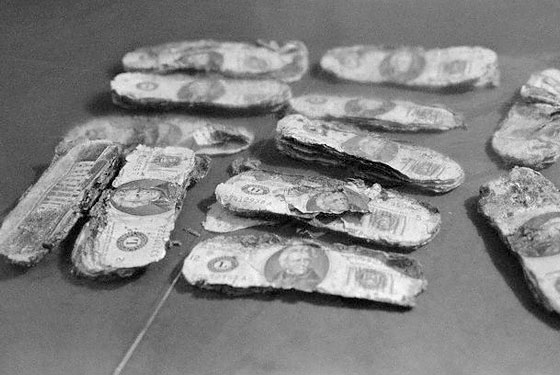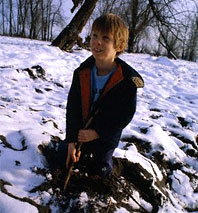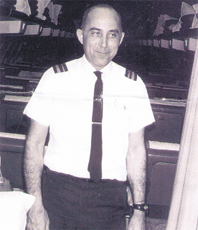
February 21, 1931
In what historians consider the first skyjacking, Peruvian rebels demand the pilot of a Ford tri-motor craft fly over Lima so they can drop political leaflets.
May 1, 1961
In the first American skyjacking, Antulio Ramirez Ortiz holds a knife to a pilot’s throat and points a gun at the co-pilot of a National Airlines flight en route to Key West. He demands to go to Cuba, and the plane returns safely to Florida after dropping him off. Ortiz is arrested fourteen years later in Miami trying to reenter the U.S.
1965
Northwest Orient Airlines purchases the Boeing 727 Cooper will later hijack. Easy to maneuver, and able to take off at low speeds and land at small airports, the 727 became the most popular domestic carrier of its day; it was also the only jet to come equipped with aft stairs.
November 24, 1971
A passenger identifying himself as Dan Cooper skyjacks a Boeing 727-100 en route to Seattle-Tacoma Airport. Armed with an attaché case he claims contains a bomb, Cooper demands, and receives, $200,000 and four parachutes. He skydives from the Northwest plane somewhere over southwestern Washington State.
December 8, 1971
U.S. Attorney General John N. Mitchell releases the serial numbers of the $20 bills that made up Cooper’s ransom. Initially, no bills are recovered, fueling the theory that Cooper perished in his jump. But the publicity surrounding the event may have just driven Cooper further underground.
April 7, 1972
Richard Floyd McCoy hijacks a Boeing 727, demands $500,000 and four parachutes, and jumps out of a plane over Provo, Utah. The FBI suspects him of being Cooper, but a Las Vegas alibi clears him of any connection.
1978
Northwest sells the plane used in the Cooper skyjacking to Piedmont Airlines, in North Carolina. A hunter in Washington finds a placard verified to be from the aft stairs of Cooper’s 727.

February 1980
Brian Ingram, an 8-year-old boy, finds $5,800 in decomposing $20 bills by the edge of the Columbia River near Vancouver, Washington. The FBI matches the serial numbers on those bills to the Cooper ransom. It is the only Cooper money ever to be recovered.
1985
“D.B. Cooper: What Really Happened” is published. The book is based on interviews with a woman known as Clara who claims to have discovered an injured Cooper two days after the skyjacking and then fell in love with him. Many discredit this account.
1986
FBI agents Ralph P. Himmelsbach and Thomas K. Worcester’s “NORJAK: The Investigation of D.B. Cooper” is published. The pair suspect Cooper died in the jump.
May 1986
Brian Ingram, now 14, receives $2,760 from his discovery of the small portion of Cooper loot. An equal share is given to the insurer of Northwest Orient. The last $280 is kept as evidence.
June 1, 1989
John List, a fugitive, is arrested for shooting his mother, wife, and three children in 1971. Former FBI agent Himmelsbach calls List a “viable suspect” in the Cooper case, but List denies any involvement.
1991
Russell Calame, an FBI agent who worked the McCoy case, and Bernie Rhodes, a former parole officer, publish “D.B. Cooper: The Real McCoy.” The book supposes that McCoy was Cooper because he had newspaper clippings about Cooper in his car and because his family claimed a mother-of-pearl tie clasp Cooper left behind on the jet belonged to McCoy.
November 24, 1996
The Ariel Store and Tavern, a bar in southwestern Washington, throws an eleven-hour party to commemorate the 25th anniversary of Cooper’s mysterious jump, drawing 500 people from across the U.S. Ariel, a town of 50, is thought by some to be the place Cooper landed. The Ariel store throws the Cooper party every year near Thanksgiving. Festivities include fireworks, raffles for Cooper memorabilia, and a Cooper-look-alike contest.

The Boeing 727-100 aircraft used in the Cooper skyjacking is scrapped in a Memphis junkyard.
July 24, 2000
A U.S. News and World Report article states that Duane L. Weber confessed to being D.B. Cooper on his deathbed. Weber’s wife recalls compelling circumstantial evidence about him, but the FBI dismisses him as a suspect after analyzing fingerprints and DNA samples.
2007
Lyle Christiansen contacts the detectives at Sherlock Investigations, a P.I. agency on the Upper West Side, claiming his brother, Kenny, is “without a doubt” Cooper.
SEE ALSO:
Unmasking D.B. Cooper